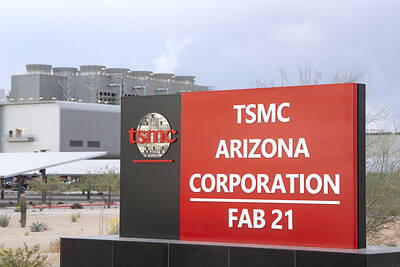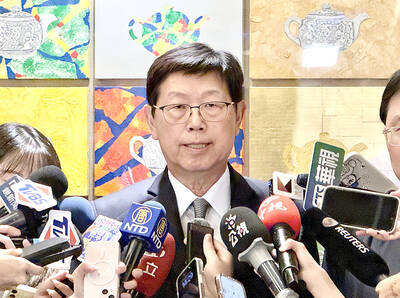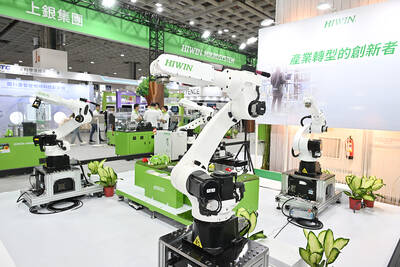Sitting in the marble lobby of a luxury hotel in Mecca, Moroccan bank director Mohammed Hamdosh gets a breather from the cacophony of pilgrims bustling around the Grand Mosque in Islam’s holiest city.
Millions have flocked to the city in Saudi Arabia for the annual hajj pilgrimage, a duty for every able-bodied Muslim who can afford it. But some can afford more than others and a controversial construction boom is catering to their needs.
“Every pilgrim comes according to his means. God gave me money, so why shouldn’t I stay in this hotel?” says Hamdosh, on a trip that has cost him 12,000 euros (US$16,545). “Hajj is tiring, so it’s good to have a room to rest.”
Inside the mosque, all pilgrims are equal as they circle the building known as the Kaaba, which houses a black stone toward which Muslims around the world turn in prayer every day.
But outside an array of towering five-star hotels have sprung up where the wealthy can bask in a 24-hour view of the Kaaba. The high-rises dwarf the mosque and the surrounding town, nestled in the mountains in the hinterland of the port city Jeddah.
It is part of a wider project to expand the mosque and bring more Muslims to the holy city for salvation, according to the writs of Islam — something Saudi Arabia sees as its duty.
Mecca has just inaugurated the world’s largest clock face perched Big Ben-style on the front of a high-rise hotel facing the Kaaba, while some 20 cranes next to the mosque herald more luxury accommodation.
The spending spree in Mecca and the second holy city Medina is valued at some US$120 billion over the next decade and at present there are US$20 billion of projects underway in Mecca alone, according to Banque Saudi Fransi. A square meter land in Mecca costs about 50,000 riyals (US$13,333).
The Saudi government is proud of the development, made possible by the country’s vast wealth accrued from its oil resources. The work is the latest stage in mosque expansions to accommodate pilgrims that stretch back decades.
“In the past 10 years, we’ve seen a big rise in pilgrims. This year, the number of pilgrims will rise by 20 percent,” Saudi Interior Minister Prince Nayef bin Abdulaziz told a news conference in Mecca this week.
“Work to further improve the level of services to pilgrims of the House of God is continuing,” he said.
Hoteliers say they expect more than 3 million pilgrims, maybe even four.
Many Saudi intellectuals, mainly from the Mecca region, are disturbed by the government’s plans, which diplomats in Riyadh say have been approved only by senior clerics away from public scrutiny.
Saudi newspapers and Islamist blogs have engaged in some debate about the building frenzy, but no criticism comes from the top Saudi scholars who are allies to the Saudi royal family in governing the kingdom.
“One cannot help but feel sad seeing al-Kaaba so dot-small between all those glass and iron giants,” said novelist Raja Alem, whose recent novel Tawq al-Hamam (The Doves Necklace) exposes destruction of historic areas, corruption and abuse.
“Long before Islam, Arabs didn’t dare live in the circle of what we call ‘al-haram,’ meaning the sacred area [of the mosque],” she said. “They spent their days in the holy city and moved out with nightfall. They thought their human activities defile God’s home.”
The rites of pilgrimage reinforce this sense of humility before God. Men wear two simple pieces of white cloth and women avoid perfumes.
Hoteliers say the government bans some displays of luxury such as swimming pools — yet the new Makkah Clock Royal Tower Hotel will boast two top-notch spas.
“The notion of filling Mecca’s sky line with modern skyscrapers is not only undermining the Kaaba, it is a clear material symbol of a massive cultural and social deletion the city has experienced,” Saudi columnist Mahmoud Sabbagh said.
“The replacement of the old city has taken with it centuries-long preserved traditions in academic, social and cultural systems and mechanisms. The whole cultural paradigm has been damaged,” he said.
In recent decades, many old houses have been torn down in Mecca to allow better access to the haram, making way for malls, hotels and huge underground parking areas. Locals are compensated for houses they lose.
Irfan al-Alawi, an Islamic theology professor based in London, said the Vatican would never sanction such work in its own sacred precinct.
The government should use space outside the city to build hotels, he said: “Mecca doesn’t have to look like Manhattan or New York.”

Taiwan Semiconductor Manufacturing Co (TSMC, 台積電), the world’s biggest contract chipmaker, booked its first-ever profit from its Arizona subsidiary in the first half of this year, four years after operations began, a company financial statement showed. Wholly owned by TSMC, the Arizona unit contributed NT$4.52 billion (US$150.1 million) in net profit, compared with a loss of NT$4.34 billion a year earlier, the statement showed. The company attributed the turnaround to strong market demand and high factory utilization. The Arizona unit counts Apple Inc, Nvidia Corp and Advanced Micro Devices Inc among its major customers. The firm’s first fab in Arizona began high-volume production

VOTE OF CONFIDENCE: The Japanese company is adding Intel to an investment portfolio that includes artificial intelligence linchpins Nvidia Corp and TSMC Softbank Group Corp agreed to buy US$2 billion of Intel Corp stock, a surprise deal to shore up a struggling US name while boosting its own chip ambitions. The Japanese company, which is adding Intel to an investment portfolio that includes artificial intelligence (AI) linchpins Nvidia Corp and Taiwan Semiconductor Manufacturing Co (TSMC, 台積電), is to pay US$23 a share — a small discount to Intel’s last close. Shares of the US chipmaker, which would issue new stock to Softbank, surged more than 5 percent in after-hours trading. Softbank’s stock fell as much as 5.4 percent on Tuesday in Tokyo, its

COLLABORATION: Softbank would supply manufacturing gear to the factory, and a joint venture would make AI data center equipment, Young Liu said Hon Hai Precision Industry Co (鴻海精密) would operate a US factory owned by Softbank Group Corp, setting up what is in the running to be the first manufacturing site in the Japanese company’s US$500 billion Stargate venture with OpenAI and Oracle Corp. Softbank is acquiring Hon Hai’s electric-vehicle plant in Ohio, but the Taiwanese company would continue to run the complex after turning it into an artificial intelligence (AI) server production plant, Hon Hai chairman Young Liu (劉揚偉) said yesterday. Softbank would supply manufacturing gear to the factory, and a joint venture between the two companies would make AI data

The Taiwan Automation Intelligence and Robot Show, which is to be held from Wednesday to Saturday at the Taipei Nangang Exhibition Center, would showcase the latest in artificial intelligence (AI)-driven robotics and automation technologies, the organizer said yesterday. The event would highlight applications in smart manufacturing, as well as information and communications technology, the Taiwan Automation Intelligence and Robotics Association said. More than 1,000 companies are to display innovations in semiconductors, electromechanics, industrial automation and intelligent manufacturing, it said in a news release. Visitors can explore automated guided vehicles, 3D machine vision systems and AI-powered applications at the show, along